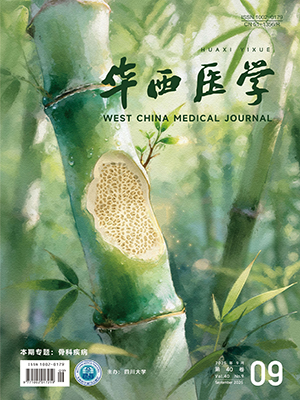| 1. |
Wild S, Roglic G, Green A, et al. Global prevalence of diabetes:estimates for the year 2000 and projections for 2030[J]. Diabetes Care, 2004, 27(5):1047-1053.
|
| 2. |
王洁, 莫永珍. 糖尿病护理门诊患者失访原因分析与对策[J]. 护理学报, 2011, 18(22):29-30.
|
| 3. |
赵芳, 周立新, 王宣, 等. 加强随访管理降低2型糖尿病患者的血脂水平[J]. 中华护理杂志, 2011, 46(7):661-663.
|
| 4. |
王娟, 王希梅. 出院随访在临床护理中的应用探讨[J]. 中国当代医药, 2013, 20(14):176-177.
|
| 5. |
张红旭, 殷洪涛, 薛萍, 等. 我国延续性护理实施现状[J]. 护理研究, 2013, 27(32):3705-3706.
|
| 6. |
刘敏, 陈丽清. 出院病人随访在优质服务中的应用[J]. 按摩与康复医学, 2012, 3(1):234.
|
| 7. |
王新民, 周汉新, 曹海波. 我国开展病人随访工作的紧迫感与国内外进展[J]. 中国卫生质量管理, 2006, 13(6):41-43.
|
| 8. |
Salaza S,Arguedas C. Evaluation of an educational program:"How totreat my diabetes"[C]. 16 th IDF Congress, 1997:A632.
|
| 9. |
Renders CM, Valk GD, Griff IS, et al. Interventions to improvethe management of diabetes in primary care, outpatient, and community settings a system atic review[J]. Diabetes Care, 2001, 24(10):1821-1833.
|
| 10. |
黄明君, 蒋晓莲. 糖尿病患者自我管理影响因素研究现状及展望[J]. 华西医学, 2012, 27(6):957-959.
|
| 11. |
刘罗薇, 刘小军. 出院患者电话随访中出现的问题分析及对策[J]. 护理管理杂志, 2005, 5(7):18-19, 23.
|
| 12. |
杨琴, 袁丽. 家庭健康教育对社区2型糖尿病病人社会支持影响的研究[J]. 护理研究, 2013, 27(19):2030-2031.
|
| 13. |
National Diabetes Education Program. Team care:comprehensive lifetimemanagement for diabetes[EB/OL].[2016-01-05]. http://www.ndep.nih.gov/resources/health.htm.
|
| 14. |
Codispoti C, Douglas MR, Mccallister T, et al. The use of a multidisciplinary team care approach to improve glycemic control and quality of life by the prevention of complications among diabetic patients[J]. J Okla State Med Assoc, 2004, 97(5):201-204.
|
| 15. |
Gagliardino JJ, Etchegoyen G, PENDID-LA Research Group.A model educational program for People with type 2 diabetes:a cooperative Latin American implementation study (PEDNID-LA)[J]. Diabetes Care, 2001, 24(6):1001-1007.
|




